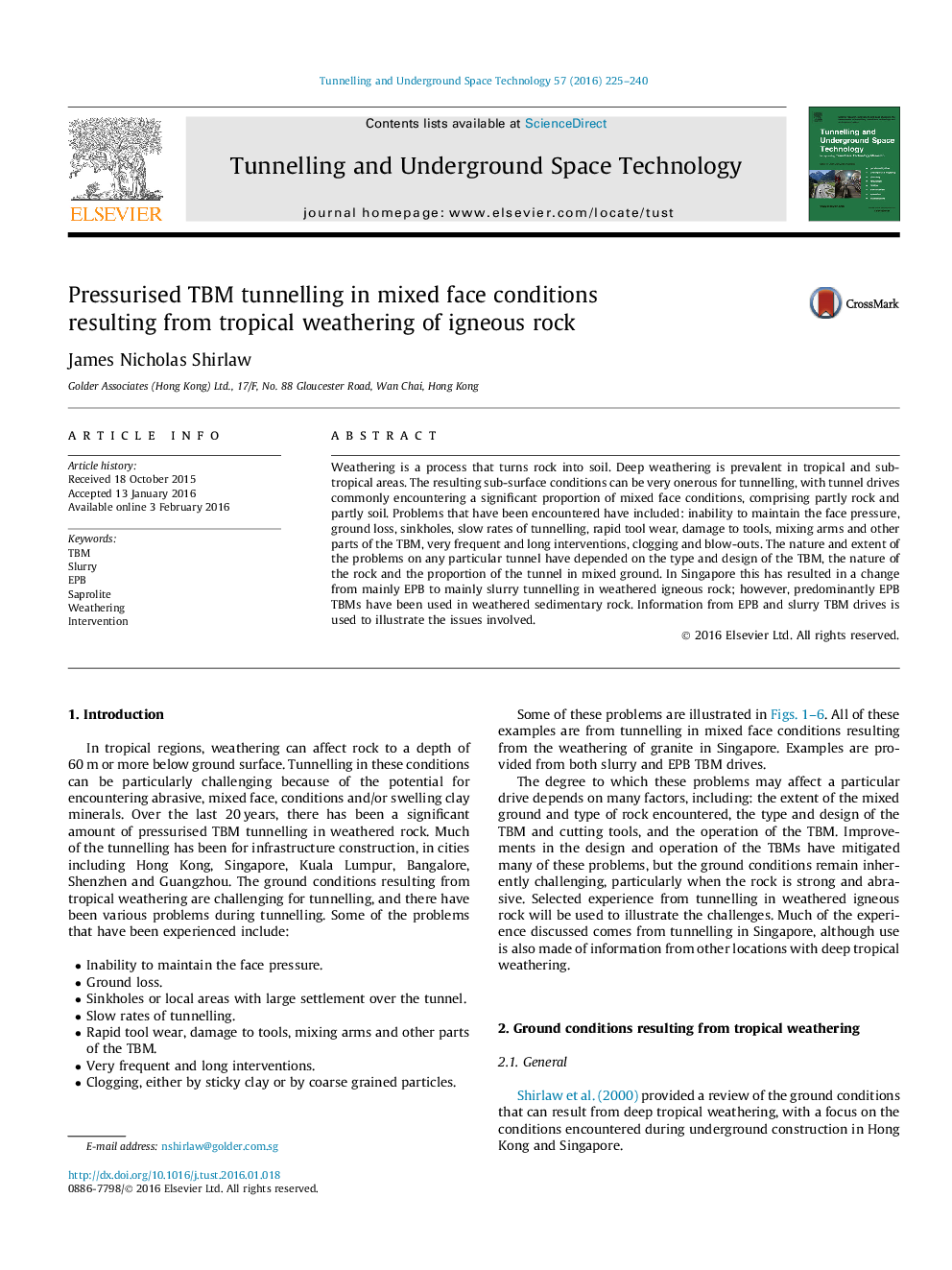| Article ID | Journal | Published Year | Pages | File Type |
|---|---|---|---|---|
| 310602 | Tunnelling and Underground Space Technology | 2016 | 16 Pages |
•Major TBM projects in Singapore have seen the increased use of slurry TBMs.•Case studies of slurry and EPB drives in weathered rock.•The slurry shield drive in weathered granite showed little difference between tunnelling in mixed ground or rock.•The EPB drive exhibited local peaks in Penetration Index and Specific Energy.•At the peaks there were very slow advance rates, rapid tool wear/damage and frequent interventions.
Weathering is a process that turns rock into soil. Deep weathering is prevalent in tropical and sub-tropical areas. The resulting sub-surface conditions can be very onerous for tunnelling, with tunnel drives commonly encountering a significant proportion of mixed face conditions, comprising partly rock and partly soil. Problems that have been encountered have included: inability to maintain the face pressure, ground loss, sinkholes, slow rates of tunnelling, rapid tool wear, damage to tools, mixing arms and other parts of the TBM, very frequent and long interventions, clogging and blow-outs. The nature and extent of the problems on any particular tunnel have depended on the type and design of the TBM, the nature of the rock and the proportion of the tunnel in mixed ground. In Singapore this has resulted in a change from mainly EPB to mainly slurry tunnelling in weathered igneous rock; however, predominantly EPB TBMs have been used in weathered sedimentary rock. Information from EPB and slurry TBM drives is used to illustrate the issues involved.
